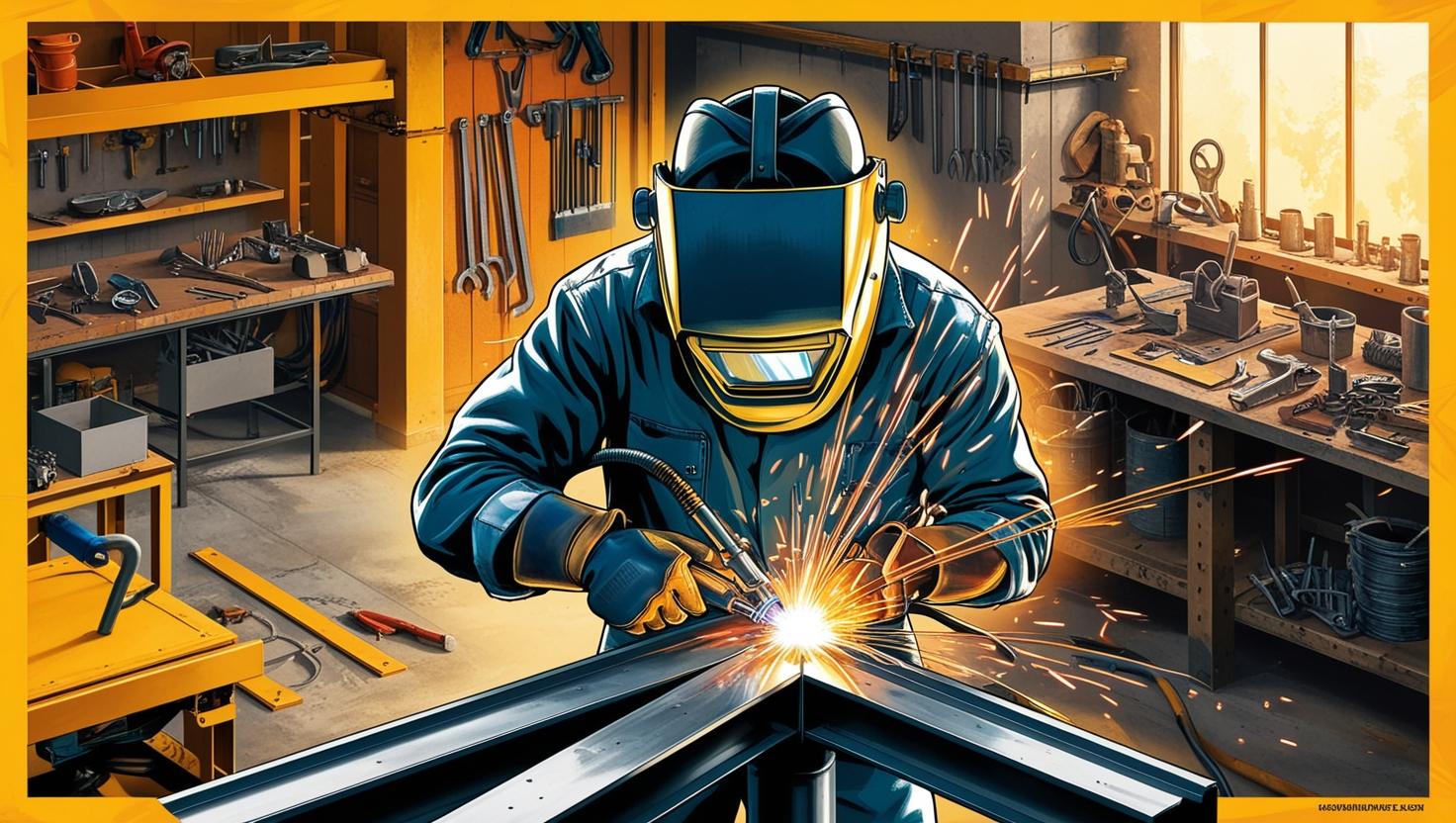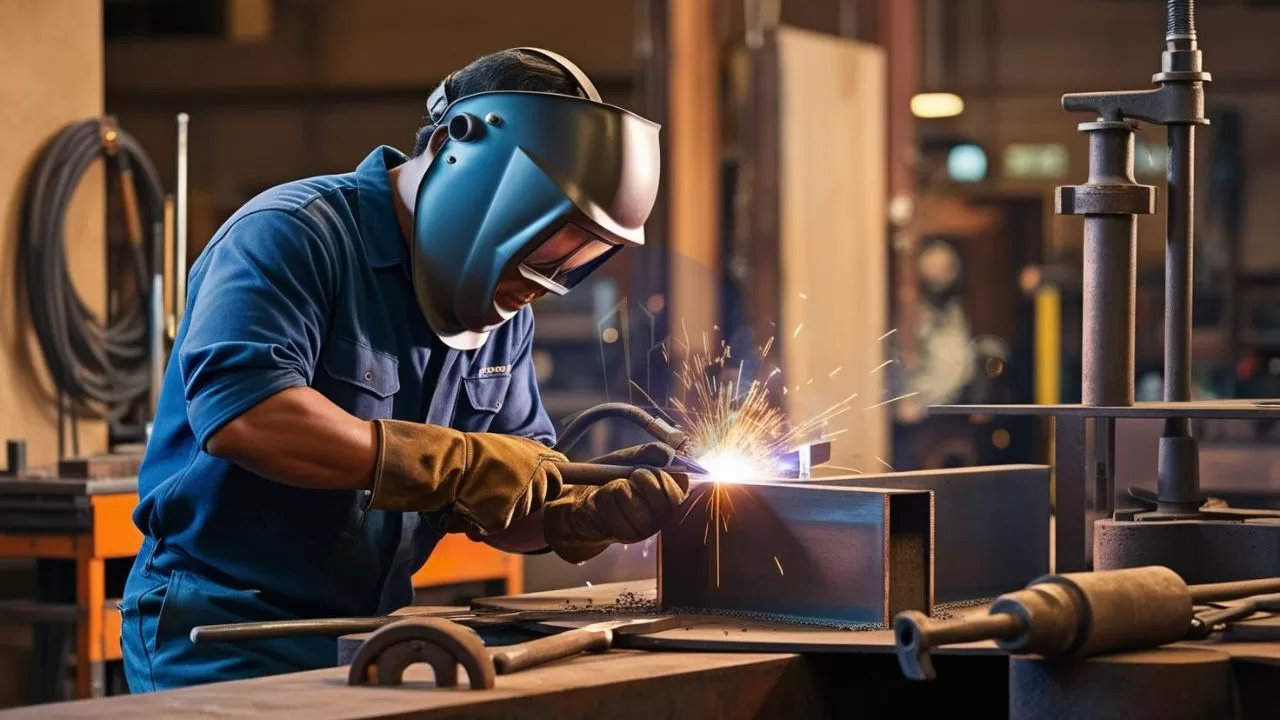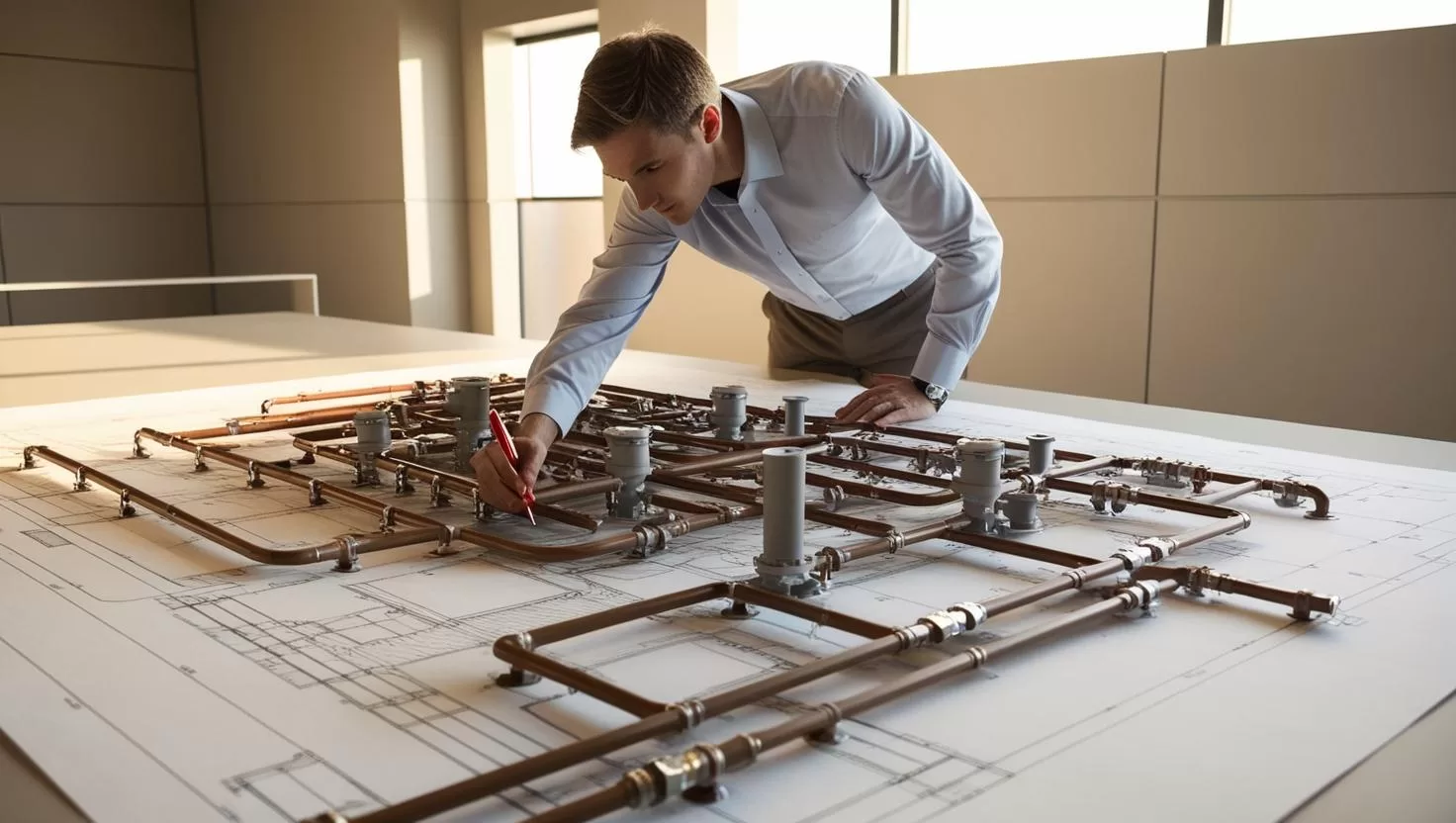Weld joint types are essential in various industries that require the joining of metal parts through welding. Understanding the different types of welds is crucial for selecting the right method for a specific project. There are five basic weld joints commonly used: butt joints, corner joints, lap joints, edge joints, and T-joints. These welding joint types are classified based on how the metal pieces are positioned in relation to each other.
The different types of welds serve different purposes depending on the design and strength requirements. Knowing these weld joint types ensures that the welded joint is strong and durable. It is also essential to understand the types of welding joints and symbols to interpret welding blueprints effectively. Mastering the joints of welding is key to achieving efficient and reliable welds in any construction or manufacturing project. According to the American Welding Society (AWS), a joint can be defined as, “The manner in which materials fit together.” The applications of welding are endless, and different jobs require different types of welds and joints.
In this article, we will describe weld joint types and the five basic weld joints used in welding. We’ll also cover the different types of welds and key welding joint types and symbols for effective welding.
Table of contents
Understanding Different Types of Welds
Weld joint types play a crucial role in various applications, ensuring the stability and strength of structures. There are different types of weld joint types used in industries, such as butt, corner, lap, edge, and T-joints. These types of joints in welding are selected based on design needs and the materials involved. Each type provides distinct advantages in terms of load-bearing and stress distribution. Understanding the types of welds and joints ensures the weld meets required standards. This ensures durability and performance, making them essential for successful fabrication and construction projects.
The term “weld joint design” refers to how metal pieces are aligned and assembled. The design of each joint significantly impacts the quality and cost of the final weld. Careful consideration and skill are essential in selecting the most suitable joint design for a welding project.

This highlights the importance of understanding different weld joint types. Familiarity with the types of joints in welding and their applications enables welders to create durable, high-quality welded joints. A solid grasp of the types of welds and joints helps ensure successful outcomes in various welding tasks.
Classification of Weld Types
Welds can be classified into three main categories: fusion welds, pressure welds, and solid-state welds.
Fusion welds are created by melting the base metals along with a filler material, allowing them to fuse upon cooling. This method is ideal for various applications requiring strong joints, commonly used in arc and gas welding.
Pressure welds join metals by applying heat and pressure. This process does not melt the base materials. It is suitable for dissimilar metals or high-strength connections in manufacturing.
Solid-state welds involve joining metals without melting, utilizing processes like ultrasonic and friction stir welding. This method preserves material integrity and minimizes thermal distortion.
Understanding these classifications helps select the appropriate weld type for specific applications, ensuring optimal performance and durability in welded joints.
5 Basic Weld Joints types
There are 5 basic weld joints that form the foundation of various welding joint types. Understanding these different types of welds ensures strong welded joints for multiple applications. The weld joint types are:
- Butt Joint
- Corner Joint
- Lap Joint
- Edge Joint
- T-Joint

These types of weld joints and symbols help welders achieve effective and durable connections in all joints of welding projects. Let us delve deep into the different types of weld joints in details.
Butt weld Joint
A butt joint weld is very common. In a butt joint, two metal pieces are aligned edge-to-edge and then welded together. This method ensures a seamless connection between the materials, creating a strong and continuous bond. This type of butt joint in welding is crucial in industries like construction, pipelines, and metal fabrication. It provides a strong, clean and reliable connection. The butt weld joint ensures full penetration. The weld passes through the entire thickness of the metal. This results in enhanced strength and durability. Identifying the correct butt weld symbol on engineering designs ensures accurate execution of the weld.

Proper interpretation of the butt welding symbol allows precise construction. This is important for applications such as structural steel, pipelines, and pressure vessels. Engineers favor a butt welded joint for its simplicity and efficiency, making it a top choice in welding design. They use butt welds to create strong and reliable joints in various applications. They are integral to many industrial projects. This ensures a dependable bond between materials. Let us have a look into the different types of Butt weld joints.
Types of Butt Weld Joints
- Square butt weld joint
- Single bevel
- Double bevel
- Single J
- Double J
- Single V
- Double V
- Single U
- Double U grooves
- Flare bevel Groove
- Flare V Groove
- Flanged Butt Joint
Let us have a look into the basics of each weld types.
Square Butt Joint

Single Bevel Butt Joint
Double Bevel Butt Joint
The double bevel butt joint has both edges of the metal pieces beveled. This joint type allows for even greater weld penetration compared to the single bevel. It is used in butt joint welding for thicker materials to guarantee enhanced strength and load distribution.
Single J Butt Joint
In a single J butt joint, one metal piece is shaped with a J-like curve, while the other remains square. The butt weld created allows deeper penetration, making it suitable for thick materials and applications requiring strong, seamless joints.
Double J Butt Joint
The double J butt joint features a J-shaped bevel on both metal pieces, allowing for greater weld penetration. This design is ideal for high-stress industrial applications where reliability and durability are critical. The joint provides a larger surface area for the weld. It ensures a stronger connection and better stress distribution. This makes it suitable for structures subjected to heavy loads or extreme conditions. The improved weld penetration achieved with the J-bevels enhances the overall strength and performance of the joint. This ensures it can withstand demanding environments.
Single V Butt Joint
A single V butt joint is formed by beveling one metal piece at an angle resembling the letter “V”. The bevel allows for deep weld penetration, making it suitable for moderate to thick materials where strength is crucial.
Double V Butt Joint
A double V butt joint has both pieces of metal beveled to form a V shape on both sides. This joint is ideal for butt joint welding thicker materials, as it provides greater weld penetration and structural integrity.
Single U Butt Joint
In a single U butt joint, one piece of metal has a U-shaped bevel. The curved design allows the weld to penetrate deeply into thicker materials, offering a strong, reliable butt weld joint suitable for heavy-duty applications.
Double U Butt Joint
The double U butt joint features U-shaped bevels on both metal edges. This joint is perfect for welding thick materials and provides deep penetration. It ensures a strong and durable butt welded joint in high-load applications.
Flanged Butt Joint
A flanged butt joint occurs when one or both metal pieces are flanged outward before welding. This type reduces weld stress and welders often apply it in butt joint welding for sheet metal or piping systems.
Round Edge (Single Flare and Double Flare) Butt Joint
In round edge butt joints, the metal edges are rounded. Single flare joints have one rounded edge, while double flare joints have both. These types of butt joints are common in thin-walled pipes and tubing, offering good weld integrity.
Corner Joints
Corner joints connect two metal pieces at a right angle, forming a corner. Commonly used in sheet metal welding, corner joints provide strong, rigid connections for frames and structures. They come in variations like closed, open, and flush, depending on the design needs. Fabricators often employ these joints in the construction of boxes, frames, and other enclosures.
Edge Joints
In an edge joint, welders connect two metal pieces along their edges, typically using it for thin materials. They commonly apply this joint when parts don’t require high strength, as seen in sheet metal fabrication. Welders create surfaces with edge joints for later welding to additional components. These joints frequently occur in applications like tanks, boxes, and metal enclosures. Precision and secure connections are essential in these contexts, despite lower structural demands.
T Joints
Welders form a T-joint by welding two metal pieces at a right angle to resemble the letter “T.” One piece intersects the center of the other, creating a perpendicular connection. T-joints are common in structural applications, frames, and piping systems. They provide strong, stable connections and are suitable for fillet welds, ensuring durability and resistance to bending or stress.
Lap joints
Welding Techniques and Their Influence on Joint Types
Welding techniques significantly influence the types of joints formed in metal fabrication. The five primary types of welding joints are butt, tee, corner, lap, and edge joints. Each type is tailored to specific applications and requirements.
Butt joints, created by aligning two pieces end to end, are commonly used for thin materials. Tee joints form a ‘T’ shape where two parts intersect at a right angle, ideal for structural frameworks. Corner joints, used when two parts meet at a 90-degree angle, are frequently employed in fabricating frames and boxes. Lap joints overlap two pieces, allowing for strength when joining materials of differing thicknesses. Lastly, edge joints connect two pieces along their edges, useful for sheet metal applications. The choice of welding technique affects the strength, flexibility, and durability of these joints, making it crucial for successful welding projects

Different welding techniques impact the strength and applicability of welded joints. Methods vary based on the specific joint type. Materials influence the choice of MIG (Metal Inert Gas), TIG (Tungsten Inert Gas), and Stick welding.
Factors Influencing the Choice of Weld Joint
Choosing the right weld joint is crucial for ensuring structural integrity and performance. Several factors influence this decision:
- Material Type: Different metals and alloys may require specific joint types to ensure strong, defect-free welds.
- Load Requirements: The type and direction of load (tension, compression, shear) influence the joint choice for strength and stability.
- Welding Position: The orientation (flat, horizontal, vertical, overhead) impacts the ease and effectiveness of certain joint designs.
- Accessibility: Space limitations or constraints may favor simpler joints that are easier to access and weld.
- Aesthetic Needs: Visible welds in finished products may require joints that achieve smoother, visually appealing finishes.
- Cost Efficiency: Certain joint types require less time or material, influencing the project’s cost.
- Application Specifications: Industry standards or design codes may dictate specific joint types for safety and reliability.
Selecting an appropriate weld joint not only ensures safety but also affects manufacturing efficiency and cost.
Key Takeaways
- Five Basic Weld Joints: The main types of weld joints are butt, corner, lap, edge, and T-joints, each with specific applications in welding projects.
- Importance of Joint Design: Selecting the right weld joint design ensures structural integrity, load distribution, and longevity.
- Types of Welds: Welds are classified into fusion, pressure, and solid-state welds, chosen based on material and project requirements.
- Butt Joint Varieties: Includes several groove designs like V, U, J, and square, tailored for different material thicknesses and strength requirements.
- Welding Techniques Impact Joints: Techniques like MIG, TIG, and Stick welding influence joint strength and are selected based on the type of joint.
- Factors Affecting Joint Selection: Material type, load requirements, cost, accessibility, and application specifications play key roles in joint choice.
Conclusion
Mastering weld joint types and techniques is vital for producing high-quality, durable welds that meet industry standards. Each of the five basic weld joints—Butt, Corner, Lap, Edge, and T-joints—has unique strengths, making them suitable for specific applications. Factors like material type, load requirements, and welding positions influence the choice of joint, impacting the weld’s strength and aesthetic. Familiarity with welding symbols, joint classifications, and the effect of different welding techniques aids in creating dependable structures. Welders and engineers ensure strong, resilient joints by understanding the unique advantages of each joint type. This understanding enhances safety and longevity in construction and manufacturing projects.




One thought on “Weld Joint types – 5 basic Welding Joints Explained”
Comments are closed.